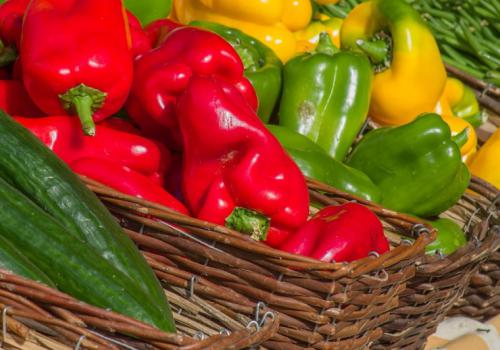In addition to tomatoes and citrus fruit, Moroccan peppers have gained ground in the European market. In the 2021/2022 agriculture campaign, Morocco exported 139.4 million kilograms of peppers to the European bloc. Moroccan pepper exports to the EU were valued at €150.8 million in the last agricultural year, according to data from Icex-Eurostat cited by Spanish agriculture-focused news outlet Hortoinfo. The data was collected between September 1, 2021, and August 31, 2022. Sold at an average price of €1.08 per kilogram in the European market, Moroccan peppers are cheaper compared to the bloc’s largest suppliers, Spain and the Netherlands. The two countries account for 64.6% of the total pepper exports to the EU countries. Spain, which contributes roughly 45% to the regional market, sold 607.2 million kilograms in the 2021/22 campaign at an average price of €1.71 per kilogram while the Netherlands sold 264.77 million kilograms at €1.95 per kilogram. The data confirmed that Spain continues to dominate the supply of peppers to the EU, Morocco is working on reducing the gap between its exports and that of its northern neighbor in an effort to consolidate the country’s position in the bloc’s fruit and vegetable market. According to Hortoinfo, Spanish pepper sales to other EU member states dropped by 5.7% in the last season which helped Moroccan sales to catch up. This trend then led to a 335.6% difference between the two countries' exports in the 2021/2022 campaign, compared to 517.2% in the 2012/2013 campaign.
In addition to Morocco, Turkey is another major non-EU exporter of peppers to the bloc with total exports amounting to 100.2 million kilograms in the last campaign. The country generated €137.31 million in revenue with an average price of €1.37 per kilogram. However, Hortoinfo noted that Turkish peppers were subjected to 85 alerts regarding the excessive use of pesticides. Pepper crops for the current 2022/23 season were transplanted at the end of May to early June across the Mediterranean. The crops need warmer weather (20-27 degree celsius) and regular irrigation to produce the best quality peppers. The ongoing drought reported in Morocco and heatwaves recorded across southern Europe might have a negative impact on the upcoming harvest season. However, it remains unclear to what extent water scarcity could affect production levels and the product’s price tag.
